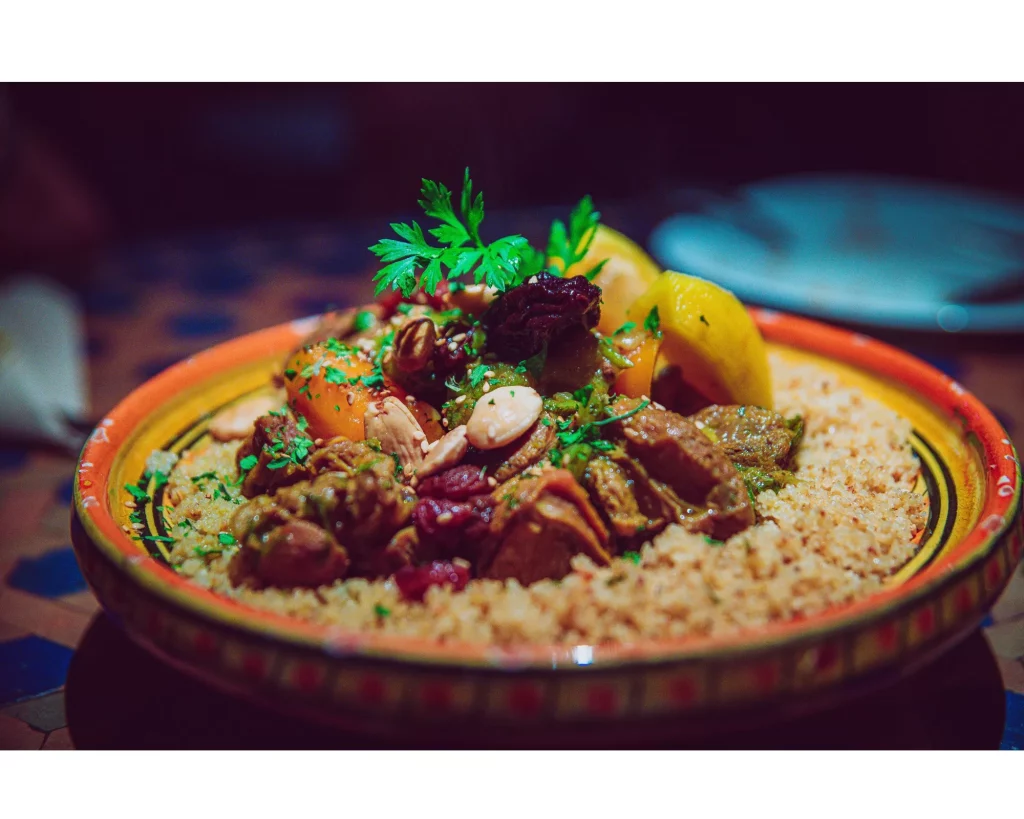Moroccan food is a delightful blend of cultural influences, rich flavors, and aromatic spices that has captivated food lovers worldwide. This unique culinary style is a product of Morocco’s diverse history, with its Berber, Arab, Andalusian, and Mediterranean roots. From succulent tagines to refreshing salads, Moroccan food offers a vibrant and delicious gastronomic experience that is hard to resist. In Morocco, there used to be 7 regions (now there are 12), and each regions has its own style of cooking – it’s like for each region there is a dish which perfectly represents it.
In this blog post, we’ll explore the fascinating world of Moroccan cuisine, delving into its history, ingredients, traditional dishes, and modern adaptations. So grab a fork and join us on a delectable journey through time and taste as we uncover the magic of Moroccan cuisine.
The History of Moroccan Cuisine
- The Berber Influence
The Berbers, the indigenous people of North Africa, have had a profound impact on Moroccan cuisine. Their culinary traditions date back thousands of years, incorporating native ingredients such as olives, figs, and dates. The Berbers introduced staples like couscous and preserved lemons, which are still central to Moroccan dishes today.
- Arab Conquest and Andalusian Influence
In the 7th century, Arab forces from the Arabian Peninsula conquered North Africa, bringing with them their own culinary traditions. Spices such as saffron, cumin, and cinnamon were introduced to Moroccan cuisine during this time. Additionally, the Arabs’ sweet-and-sour flavor combinations have become a hallmark of Moroccan dishes.
In the 8th century, Moors from the Iberian Peninsula (modern-day Spain and Portugal) crossed the Strait of Gibraltar and settled in Morocco. The Andalusian influence added more complexity to the already diverse Moroccan food. They introduced sophisticated cooking techniques and new ingredients, such as almonds, oranges, and sugar.
- Ottoman Influence
In the 16th century, the Ottoman Empire expanded into North Africa, leaving its mark on Moroccan cuisine. Dishes like b’stilla, a savory-sweet meat pie, are a testament to the Ottoman influence.
- French Colonial Era
From 1912 to 1956, Morocco was under French colonial rule. The French influence is evident in some aspects of Moroccan food, particularly in the use of butter and the emphasis on pastries and desserts.
Ingredients and Spices
Moroccan cuisine is known for its rich and aromatic flavors, which are achieved through the use of various spices and ingredients. Some of the most commonly used ingredients in Moroccan dishes include:



